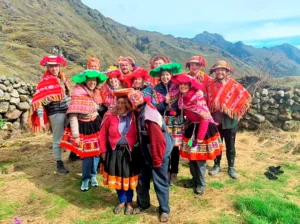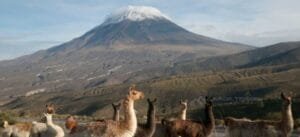Machu Picchu, one of the most iconic archaeological sites in the world, attracts millions of tourists each year. This ancient Incan citadel, nestled in the Andes Mountains of Peru, is not only a marvel of historical significance but also a testament to the ingenuity and craftsmanship of the Inca civilization. However, the popularity of Machu Picchu has brought about significant challenges in terms of conservation and sustainability. This article explores the impact of tourism on Machu Picchu and the measures being taken to preserve this UNESCO World Heritage site for future generations.
The Rise of Tourism and Its Challengest

Over the past few decades, tourism to Machu Picchu has grown exponentially. This influx of visitors has provided a significant boost to the local economy, creating jobs and promoting cultural exchange. However, the sheer volume of tourists has also placed considerable strain on the site’s delicate infrastructure. The constant foot traffic contributes to erosion, while the construction of facilities to accommodate tourists can threaten the surrounding environment.
Environmental and Cultural Concerns

The natural environment around Machu Picchu, characterized by its rich biodiversity, is sensitive to changes brought about by human activity. Increased tourism has led to challenges such as waste management issues, deforestation, and pollution, which can harm local wildlife and plant species. Additionally, the cultural heritage of the site is at risk. The presence of large crowds can affect the preservation of ancient structures, and the commercialization of the area may detract from its historical and spiritual significance.
Conservation Efforts and Sustainable Practices

Recognizing these challenges, Peruvian authorities and international organizations have implemented a range of conservation efforts and sustainable tourism practices. These include:
Sustainable Infrastructure: Investments in sustainable infrastructure, such as eco-friendly hotels and transportation options, help reduce the environmental footprint of tourism in the area.
Visitor Limits: To protect the integrity of Machu Picchu, strict limits have been placed on the number of daily visitors. This measure helps reduce overcrowding and minimize environmental impact.
Regulated Access: Certain areas of the site are restricted or have controlled access to prevent damage to fragile structures. Visitors are also encouraged to follow designated paths to limit erosion.
Waste Management: Efforts to improve waste management include promoting responsible tourism practices among visitors and enhancing recycling and waste disposal systems.
Education and Awareness: Programs aimed at educating tourists about the importance of preserving Machu Picchu and its surroundings are crucial. Awareness campaigns encourage respectful behavior and support for conservation initiatives.
The Role of Responsible Tourism

Tourists play a vital role in the conservation of Machu Picchu. By adopting responsible tourism practices, visitors can help protect this precious site. This includes respecting regulations, minimizing waste, supporting local communities, and choosing sustainable tour operators. By being conscious of their impact, tourists can contribute to the preservation of Machu Picchu’s natural and cultural heritage.
Future Challenges and Opportunities

As global travel continues to grow, the challenge of balancing tourism and conservation will persist. However, there are also opportunities to enhance the sustainability of tourism at Machu Picchu. Innovations in technology, such as virtual tours and augmented reality, can provide alternative ways to experience the site without contributing to physical wear and tear. Moreover, continued collaboration between governments, conservation organizations, and the tourism industry is essential to developing and implementing effective strategies for sustainable tourism.
Conclusion
The impact of tourism on Machu Picchu is a complex issue that requires a delicate balance between preserving a priceless cultural heritage and supporting the local economy. Through concerted efforts in conservation, sustainable tourism practices, and responsible visitor behavior, it is possible to safeguard Machu Picchu for future generations. By respecting this ancient wonder and its surroundings, we ensure that it remains a source of inspiration and learning for years to come.

